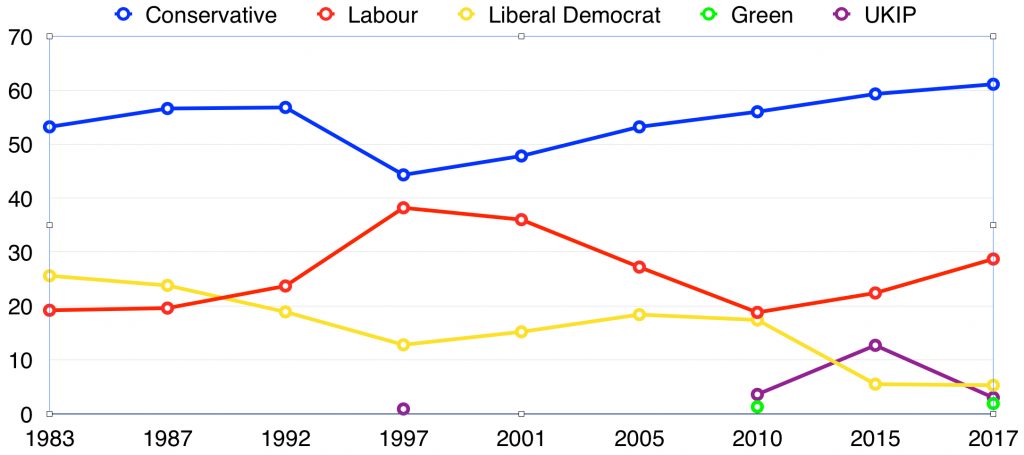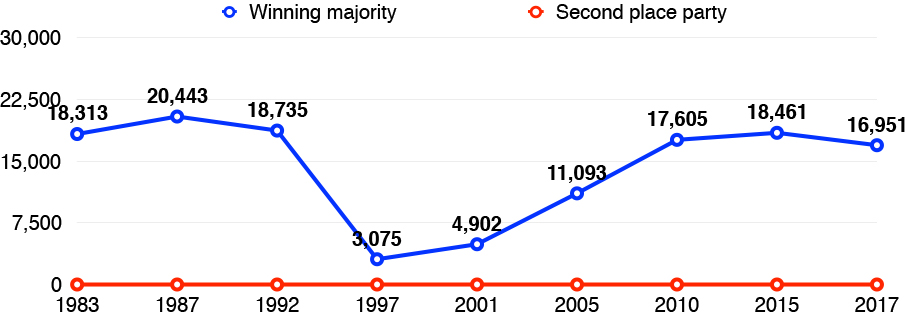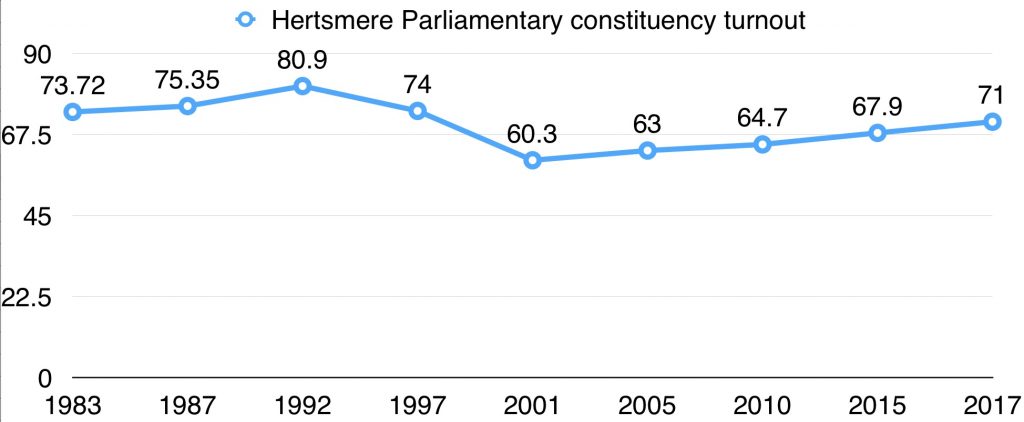About a week ago, just before the 2017 General Election, we asked you which local issues would motivate you to vote. We did this for the last election too, back in 2015.
So, in order of importance to you, here are the issues that got the Radlett electorate voting, with the 2015 position in italics and the number of votes for each issue (in brackets).
1. The NHS (140) – up from 3rd position
2. Local amenities (134) – up from 8
3. The freight terminal and the green belt (133) – down from number 1
4. Caring for the elderly (130) – up from 11
5. Crime and policing (130) – down from 4
6. Transport and commuting (129) – non-mover
7. Young people (129) – up from 9
8. Development in Radlett (121) – down from 2
9. The Newberries car park development (121) – new entry
10. Housing (120) – up from 12
9. Local business (117) – down from 7
10. Environment (114) – non-mover
11. Or is it really all about Brexit? (112) – new entry
12. Schools (105) – down from 8
The NHS has displaced the freight terminal as your number one concern since 2015, the Newberries car park redevelopment is a new entry at number nine and, although we were really expecting you to tell us that Brexit trumps everything else, it was the second-least important issue in the survey. Does this reflect a national loss of interest in the mechanics of Brexit, now that it’s a done deal? And will the biggest electoral surprise in decades throw the whole Brexit calculation in the air again anyway?
It’s also fascinating that schools have dropped from number eight to last place. The huge cuts coming down the pipe for all state schools are clearly not freaking out the population of Radlett.
Our 2017 election survey results are here. And you can read the 2015 results here.
And on the national scale, Tory donor (and noted tax avoider) Lord Ashcroft runs a large and detailed survey of UK voters after every major vote. His most recent data is absolutely fascinating. He shows, for instance, that the only age group that voted majority Conservative in last week’s election was the over-55s.

 That’s 34 years of Hertsmere General Election voting data, from the Thatcher high water mark of 1983 (the biggest landslide since Labour’s 1945 win, you’ll remember) to 2017’s most surprising result, via that other high water mark – Blair’s even bigger 1997 landslide.
That’s 34 years of Hertsmere General Election voting data, from the Thatcher high water mark of 1983 (the biggest landslide since Labour’s 1945 win, you’ll remember) to 2017’s most surprising result, via that other high water mark – Blair’s even bigger 1997 landslide.

 Blimey, what a night. British politics has been turned on its head. Young voters have challenged the electoral status quo as never before. A Prime Minister brought low by hubris. But you don’t want to know about all that. You want to know what happened here in Hertsmere, right?
Blimey, what a night. British politics has been turned on its head. Young voters have challenged the electoral status quo as never before. A Prime Minister brought low by hubris. But you don’t want to know about all that. You want to know what happened here in Hertsmere, right?
 First of all, if you live in Radlett and can vote,
First of all, if you live in Radlett and can vote, 